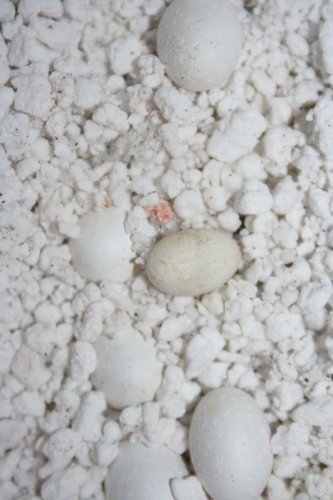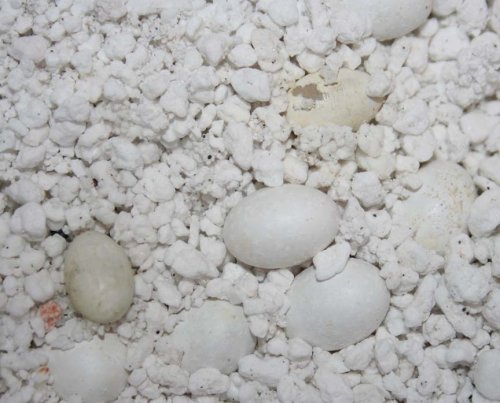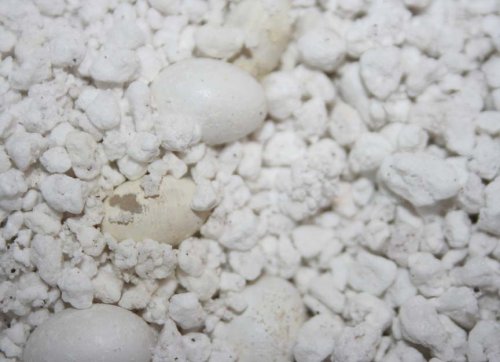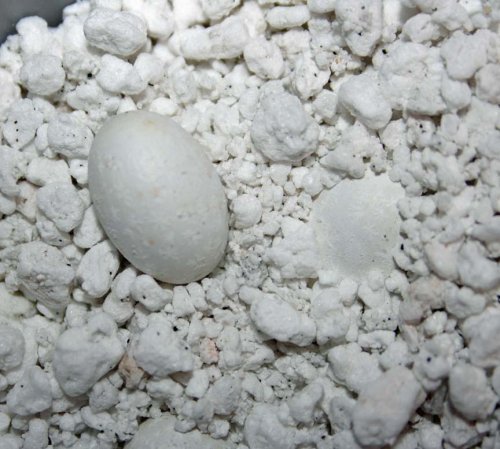MusicCityExotics
New Member
Okay, I need some help. I have NEVER seen a cham clutch act like this before. They are panther chameleons, this is the mother's first clutch. The sire has been bred many times before. They are definitely fertile (candled them). The clutch was laid on November 11th, so we are at nine months now. They have been incubating at between 72 and 74 degrees. Humidity has been normal. I have them in a LLL incubator. I have a gauge inside to make sure the external temp reading is accurate. They are in hatchrite. No power outages, or anything like that. They are in a a thick plastic container with small holes drilled in the top.
It started out very normal, with 32 nice white eggs. Well about a month ago, I noticed a snowflake like pattern appearing on many of the eggs. Each egg is demonstrating many time little snowflakes. Nothing deep, just strange. They seemed white and healthy, so I left them alone.
Well then about 4 of them starting sweating and shrinking last week. No piping at all. Just a few little beads of water, nothing major. There is a sizable difference in these eggs over the others. Well, they stopped sweating after a couple of days. They are still small, but no mold. They do now have a yellowish color to them.The others are still white but have the snowflake patterns. One does have a weird abnormality on the surface (window maybe?)
I have never seen a clutch do this before and was curious as to the status of these eggs. I have always seen piping or a starburst pattern soon after sweating. I have tried misting the four shrinkers, but nothing. The eggs don't feel rotten, but I am trying to minimize handling them. Some photos are attached. Please help!!! Can this clutch be saved? What should I do?
It started out very normal, with 32 nice white eggs. Well about a month ago, I noticed a snowflake like pattern appearing on many of the eggs. Each egg is demonstrating many time little snowflakes. Nothing deep, just strange. They seemed white and healthy, so I left them alone.
Well then about 4 of them starting sweating and shrinking last week. No piping at all. Just a few little beads of water, nothing major. There is a sizable difference in these eggs over the others. Well, they stopped sweating after a couple of days. They are still small, but no mold. They do now have a yellowish color to them.The others are still white but have the snowflake patterns. One does have a weird abnormality on the surface (window maybe?)
I have never seen a clutch do this before and was curious as to the status of these eggs. I have always seen piping or a starburst pattern soon after sweating. I have tried misting the four shrinkers, but nothing. The eggs don't feel rotten, but I am trying to minimize handling them. Some photos are attached. Please help!!! Can this clutch be saved? What should I do?








